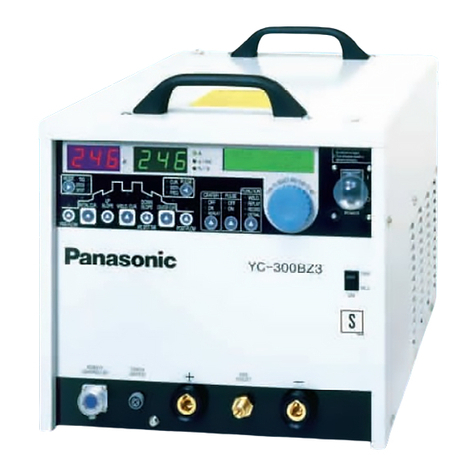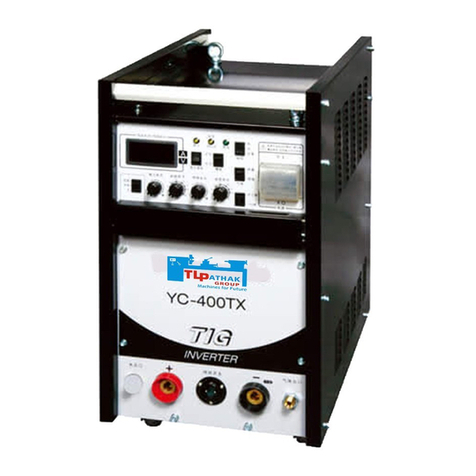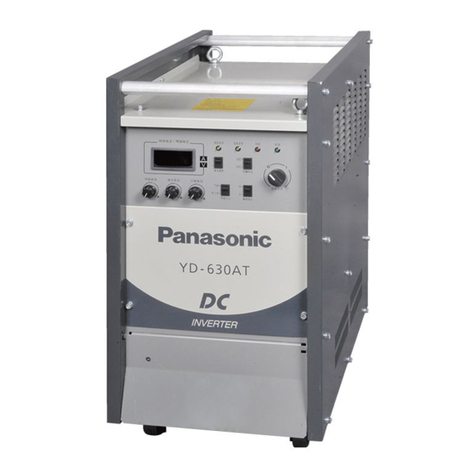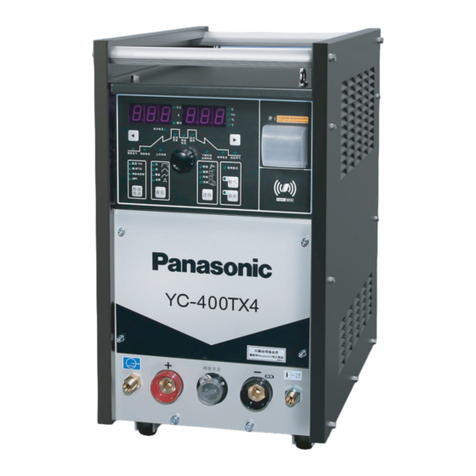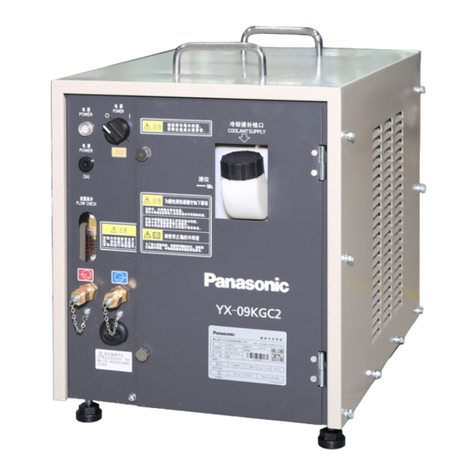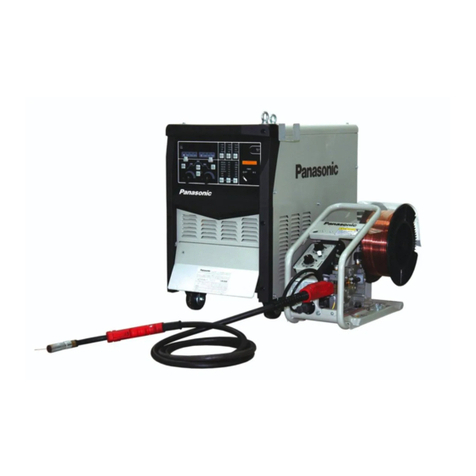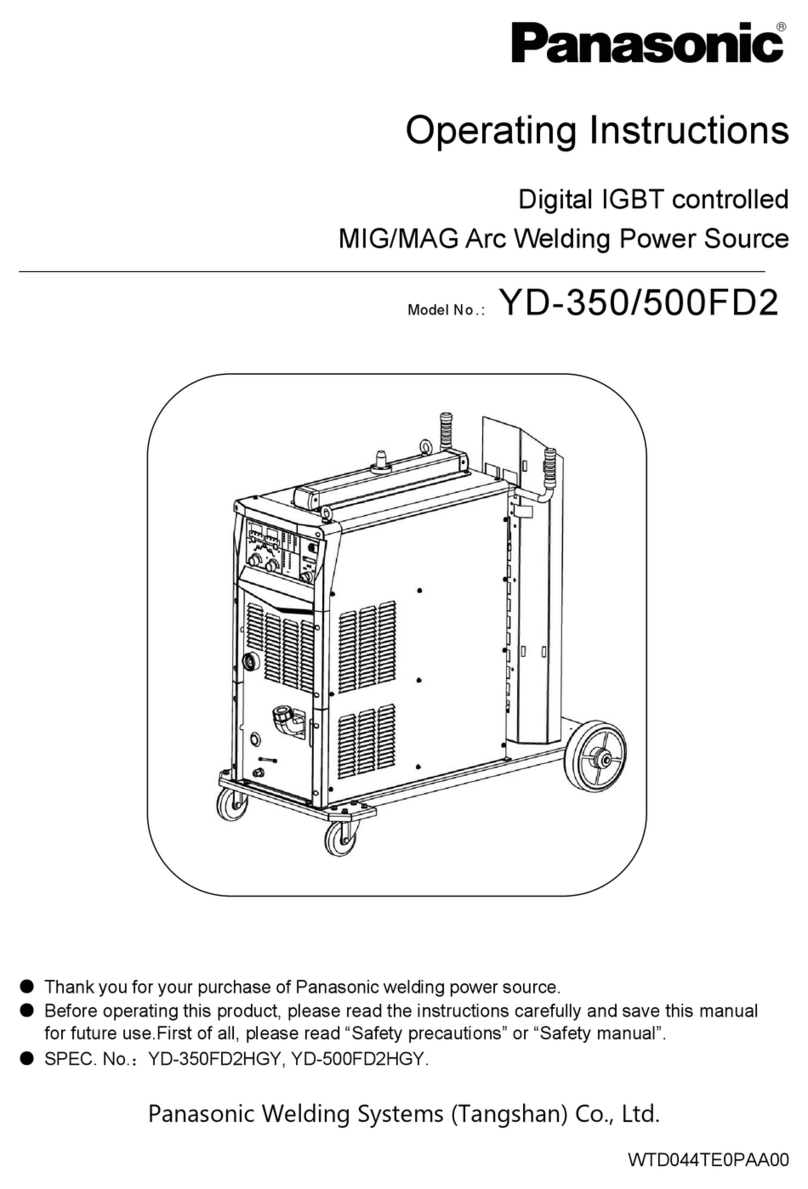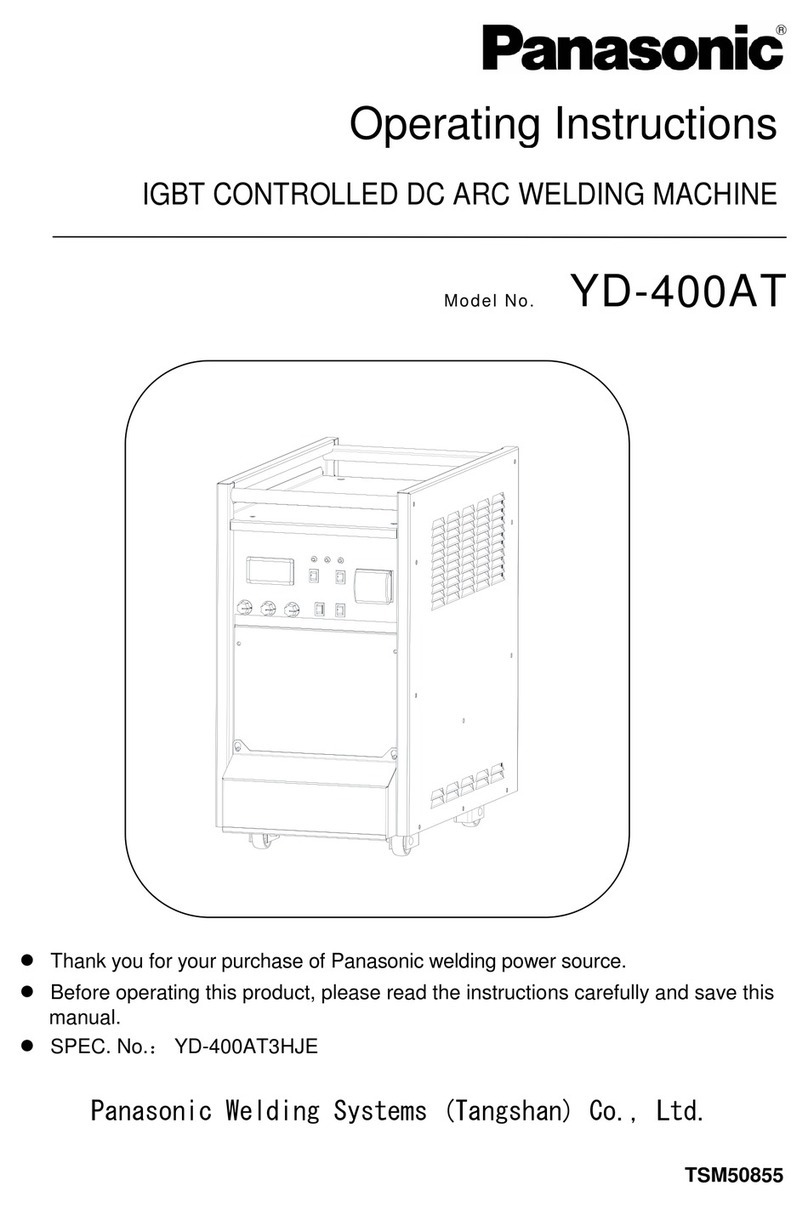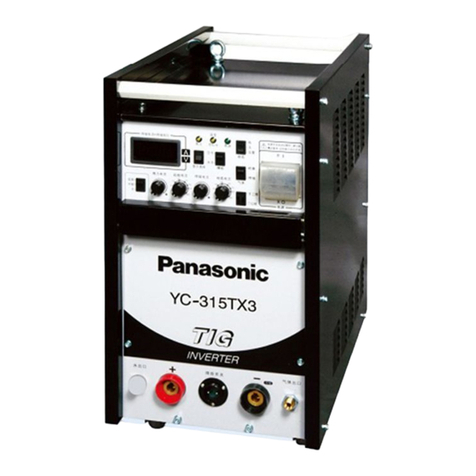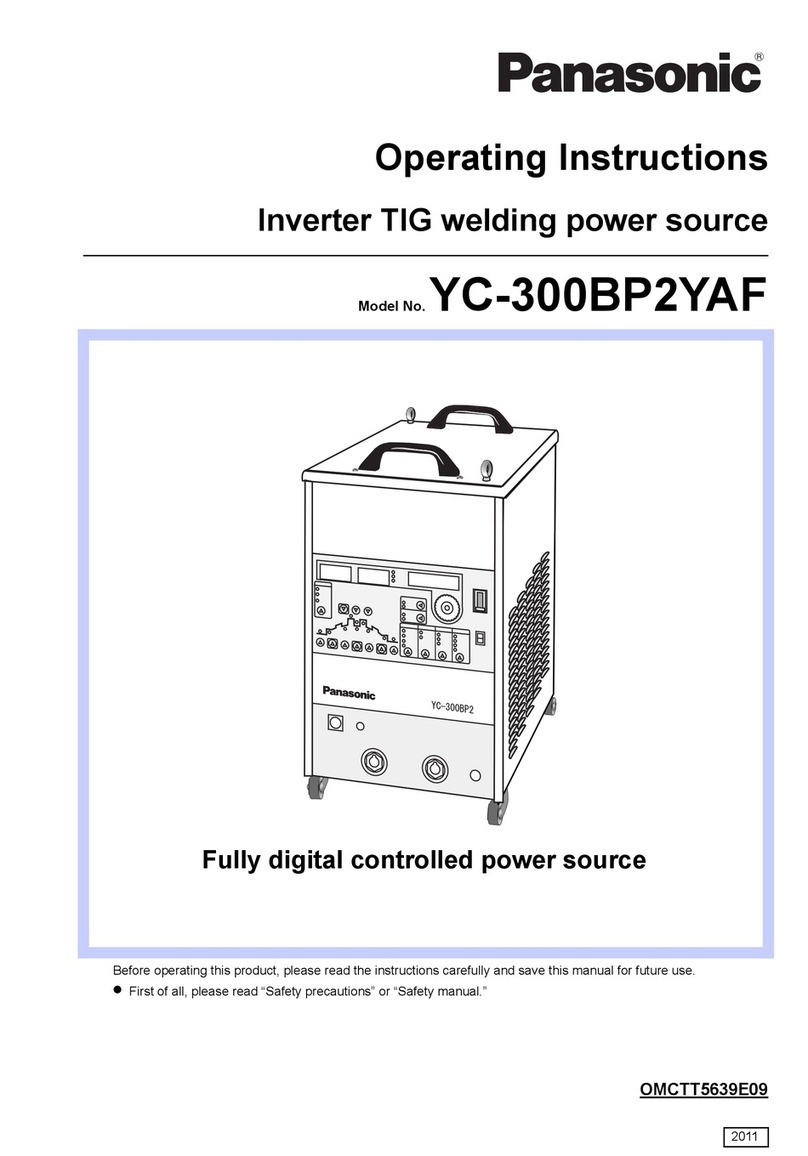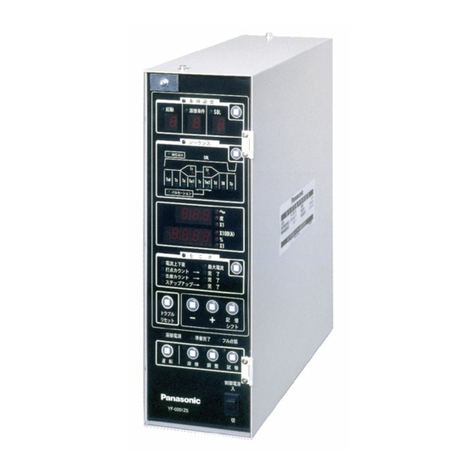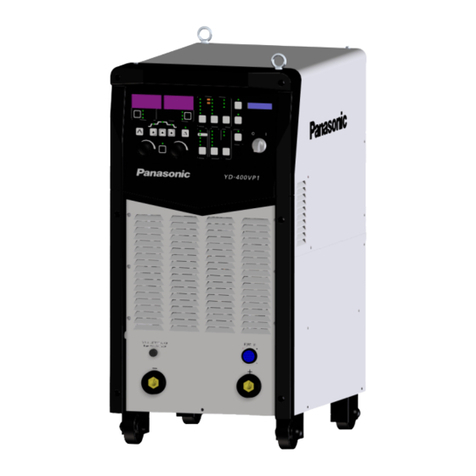
II
ⅡSafety precautions
Observe the following instructions to
prevent the hazard.
(1)Never use the welding power source for other than
welding purpose. (e.g. Never attempt to use the welding
power source for pipe thawing.)
(2)It is very important to comply with all instructions,
safety warnings, cautions and notes mentioned. Failure
to do so can result in serious injury or even death.
(3)Work of driving source at the input side, selecting work
site, handling, storage and piping of high pressure gas,
storage of welded products and also disposal of waste
should be performed according to the operating
instructions and national, state and local codes and
regulations.
(4)Prevent any unauthorized personnel to enter in and
around the welding work area.
(5)Pacemaker wearers should consult their doctor before
going near arc welding. Magnetic fields can affect
pacemakers.
(6)Only educated and/or skilled persons who well
understand this welding power source should install,
operate, maintain and repair the unit.
(7)Only educated and/or skilled persons who well
understand the operating instructions of the unit and are
capable of safe handling should perform operation of the
unit.
Against electric shock
Observe the following instructions to
prevent the hazard.
(1)Do not touch live parts.
(2)Grounding of the case of the welding power and base
metal or a jig electrically connected to the base metal
must be performed by educated and/or skilled persons.
(3)Before installation or maintenance work, turn off power
at the power box, wait it for at least five minutes to
discharge capacitors. Significant voltage may exist on
capacitors after turning off power at the power box so it
is imperative to check to make sure that no charged
voltage present at capacitors before touching any parts.
(4)Do not use undersized, worn, damaged or bare wired
cables.
(5)Connect cables firm and insulate connection parts.
(6)Keep all cases, panels and covers securely in place.
(7)Do not handle the welding power source with torn or
wet gloves.
(8)Wear safety harness in case of working above floor
level.
(9)Turn off all equipment when not in use.
(10)Perform periodic checks without fail and repair or
replace any damaged parts before using the power
source.
Ventilation and protective equipment
Oxygen deficit, fume and gas
generated during welding can be
hazardous.
(1)When conducting welding in the bottom of the tank,
boiler or hold as well as legally-defined sites, use a local
exhauster specified by the applicable laws and
regulations (occupational safety and health regulation,
rules on preventing suffocation or etc.) or wear
protective breathing gear.
(2)To prevent dust injury or poisoning by the fume
generated during welding, use a local exhauster specified
by the applicable law (occupational safety and health
regulation, rules on preventing injury by inhaled dust or
etc.), or wear protective breathing gear.
(3)When conducting welding in a confined area, make sure
to provide sufficient ventilation or wear protective
breathing gear and have a trained supervisor observe the
workers.
(4)Do not conduct welding at a site where degreasing,
cleaning or spraying is performed. Conducting welding
near the area where any of these types of work is
performed can generate toxic gases.
(5)When welding a coated steel plate, provide sufficient
ventilation or wear protective breathing gear. (Welding
of coated steel plates generates toxic fume and gas.)
Against fire, explosion or blowout
Observe the following cautions to
prevent fires explosion or blowout.
(1)Remove any combustible materials at and near the work
site to prevent them from being exposed to the spatter. If
they cannot be relocated, cover them with a fireproofing
cover.
(2)Do not conduct welding near combustible gases.
(3)Do not bring the hot base metal near combustible
materials immediately after welding.
(4)When welding a ceiling, floor or wall, remove all
flammables including ones located in hidden places.
(5)Properly connect cables and insulate connected
parts. Improper cable connections or touching of
cables to any electric current passage of the base
metal, such as steel beam, can cause fire.
(6)Connect the base metal cable at a section closest to the
welding part.
(7)Do not weld a sealed tank or a pipe that contains a gas.
(8)Keep a fire extinguisher near the welding site for an
emergency.
